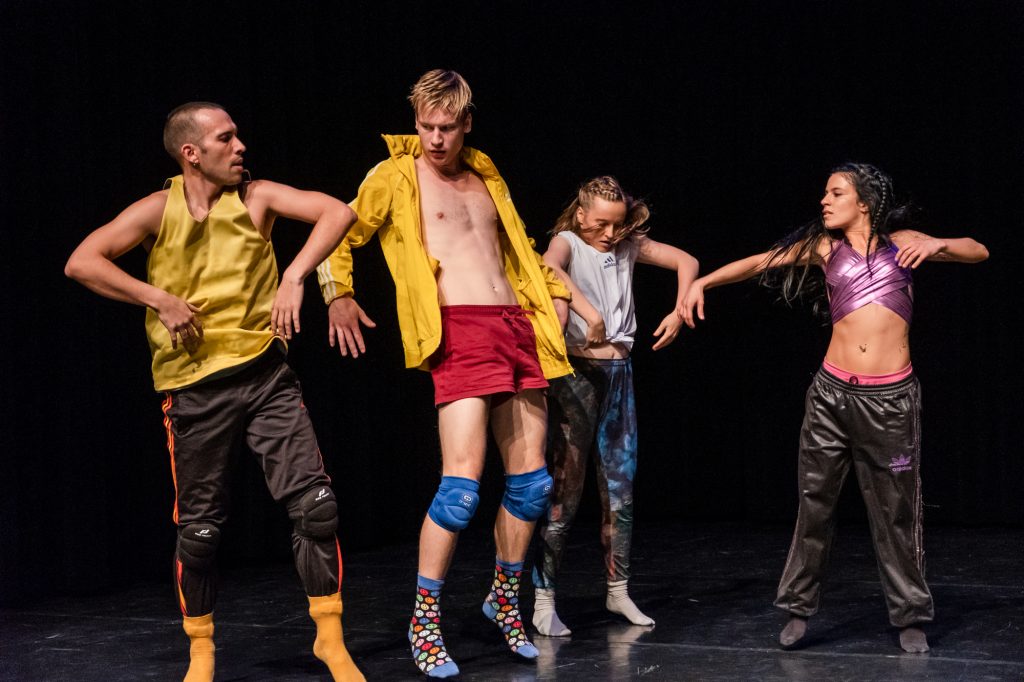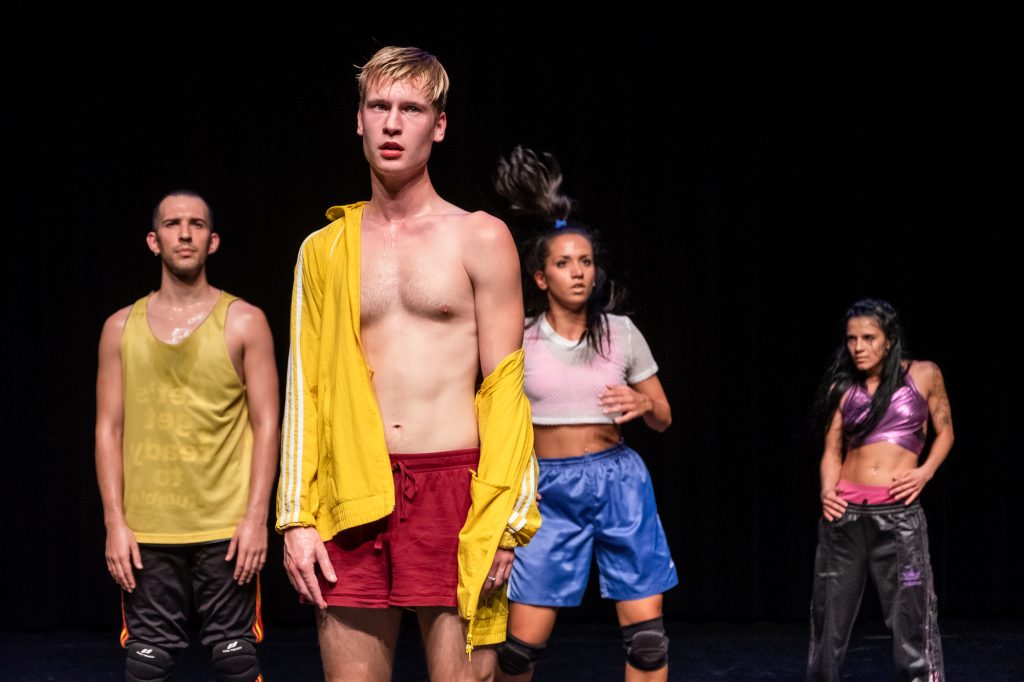Organism of bodies
Essay on Performing Gender Night
By Sandy Seifert
“From a conceptual point of view, I am interested in the possibility of arriving through a performative practice to a body and to an organism of bodies which, through a complex score perform a transfiguration in which gender is no longer perceived, a collective transformation capable of evoking freedom, joy, desire and change.” Roberta Racis
The studio performance choreographed by Roberta Racis and performed by ten dancers was the product of a weeklong research about bodies, movement and dance. The questions focused on how bodies are perceived and what the connotations around bodies and certain movements are. Exploring how bodies and movements are gendered ‘female’ or ‘male’. One of the dancers gave a clear example of gendered movements. Hard, grounded and powerful movements are often perceived as typically ‘male’, elegant, soft and flowing movements as typically ‘female’. It was precisely these ‘movement stereotypes’ Racis and her dancers deconstructed and transformed to create new, genderless movements in order to create a universe in which gender is not an issue. They ultimately presented a performance that offers the opportunity to change the way we look at certain bodies and movement.
The performance began with the dancers spread across the stage, each gazing at a different point in the room, some eyes pierced the public, some were focusing on the floor or the performer next to them. After a built up of tension by the gazing and lack of movement the whole group slowly came to life guided by constant changing and transforming music in the background.
The group moved around each other and with each other organically, forming a constellation of bodies. Planets moving around their own core and the cores of each other. This caused a constant change of formations and the creation of different little universes on the stage. Movements and formations kept changing in subtle ways so the focus kept shifting and it was hard to really put a label on any of the ‘celestial bodies’.
This was the main goal of the performance, freeing the bodies from all gender projection and cliches, all connotations that come with a body. Racis explained that during the workshop the dancers and her were constantly focused on language, what does a movement ‘mean’, what does it tell us, and how can we deconstruct these meanings and create a completely new, universal language through dance that is disconnected from the gender stereotypes that also exist in movement. All that mattered were the bodies of the dancers and the rhythm they were moving their bodies to. All that mattered was self determination through a group and the development of identity through the shared experience of music and dance.
One of the dancers expected to work with gender boundaries as an issue but instead, he said, the issues around the gendering of bodies got erased through their language of dance. Racis and the dancers were able to find a grey area, where they moved away from dichotomous thinking and instead created a space where certain bodies can be fluid entities free from a lot of gender rules and boundaries.
An important point is that this performance is not a representation of reality, it was an utopian view on a way we could look at certain bodies without judgement where everybody (every body) has the opportunity to define itself through group practice and where everybody is accepted in doing so. In line with this, all dancers in this group seemed able-bodied and able to engage with all the movements of the choreography what makes this certain kind of form of self determination exclusive to a certain kind of bodies. But as Racis herself aptly put it: “We are not representing anything, we are presenting a possibility” and that is the powerful philosophy behind this piece; It deconstructs established concepts/ideas and presents the audience with another way of looking at certain bodies and the way these bodies may move through space: one where dance can make it possible to create a new languages when it comes to observing gender.
Sandy Seifert is a Research Master Student Gender Studies at the University of Utrecht.


